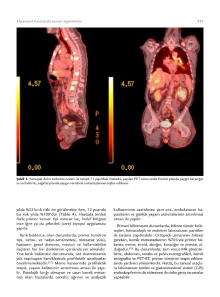Skeletal system is the region where cancer cells metastases most frequently after the liver and lung. For the treatment approaches of skeletal metastases where palliative treatment methods were frequently preferred and pain control was the primary aim, significant developments are happening in the recent years.
Due to modern diagnostic devices gaining routine place in the monitoring protocols, metastases can be determined earlier. Moreover, with new chemotherapy and radiotherapy regimes, use of target-specific agents such as biphosphonate and denosumab, frequency of paraneoplastic situations regarding skeletal system occurring have diminished. In addition to these developments, surgical technique choices have also increased over the years. When necessary, osteosynthesis can be performed with minimal invasive methods and with low morbidity, or acceptable functional results can be obtained with successful reconstruction options after wide resections.
As a result; life expectancy increased for even cases with multi-metastases where situations related to skeletal system such as pathological breaks, medulla spinalis pressure, hypercalcemia. We believe that, it is this situation what brings orthopaedic surgeons against scenarios with metastasis. While primary tumour surgery in orthopaedic oncology is mostly performed by people trained in this field or with tendencies towards it, skeletal metastasis or pathological breaks are usually managed by orthopaedic and traumatology specialists.
Due to this, with the belief that it will contribute to daily orthopaedic practice, diagnostic algorithms for approaching skeletal metastasis in oncology were touched upon. You can access the PDF document from “Documents In This Article” section below this article. The full article is in pages 523 - 534. Direct JPG format is added to my gallery. For all your questions, you can always send an e-mail whenever you want.













